B2B SEO Guide
B2B SEO content: A definitive guide for high-quality content
Book a FREE SEO Strategy Consultation >
Further Reading:
Effective B2B SEO content is essential for driving visitors to your site and starting them down the path toward becoming happy clients.
But what’s the best way of crafting that content? What should it be about? How should it be organized?
There are a thousand questions about content and, at accelerate agency, we’ve heard them all. Let’s delve into the world of B2B content—what it is, how it differs from B2C content, and most importantly, how to make it work for your business.
What is B2B SEO content?
B2B SEO content is any content that’s developed specifically to attract B2B clients. This type of content will typically focus on building your brand authority with potential customers, with a view to converting them further down the line.
There are multiple formats used for this purpose, and it’s a good idea to combine a mixture of:
- Blogs: An excellent opportunity to demonstrate your expertise in industry-relevant areas. Craft blog posts that provide readers with genuinely useful answers to their questions.
- Landing pages: Product or feature-specific landing pages are a useful way of shepherding leads toward conversion. They should supply a good amount of information about your product without going over the top, since you want to avoid cluttering the page. Make sure to include a clear call to action to encourage visitors to take the next step.
- White papers: This is original research carried out by your company that you make available online. The idea here is to bolster your company’s reputation as experts in your field. This is highly beneficial when potential clients are in the awareness stage of the sales funnel.
- Videos: The audio-visual nature of videos lends them an immediacy that creates impact. You can take this in a few different directions, too.
Creating videos that illustrate how to use your product can be done relatively easily. Or you could go the big-budget route and produce content designed to entertain and go viral, boosting your visibility. Either approach can work as part of a comprehensive B2B SEO content strategy. - Templates and tools: The best way of engaging your audience is to provide them with something of genuine value. If you can offer free bonus content like templates or tools that visitors to your site will be able to use, they’re more likely to return.
Bear in mind that this isn’t an exhaustive list. Pretty much any kind of format can serve as a useful conduit for content that draws new clients in. The ones that are a perfect fit for your company will depend on a number of factors such as your budget, area of business, and target market.
One important thing to be aware of is that a B2B SEO strategy is not the same as a B2C one. SEO content optimized to attract B2B clients tends to have a different focus from your typical B2C content. So let’s dig into why that is.
B2C Vs. B2B SEO content
When we’re considering the differences between B2C and B2B content, it all comes down to the sales funnel:
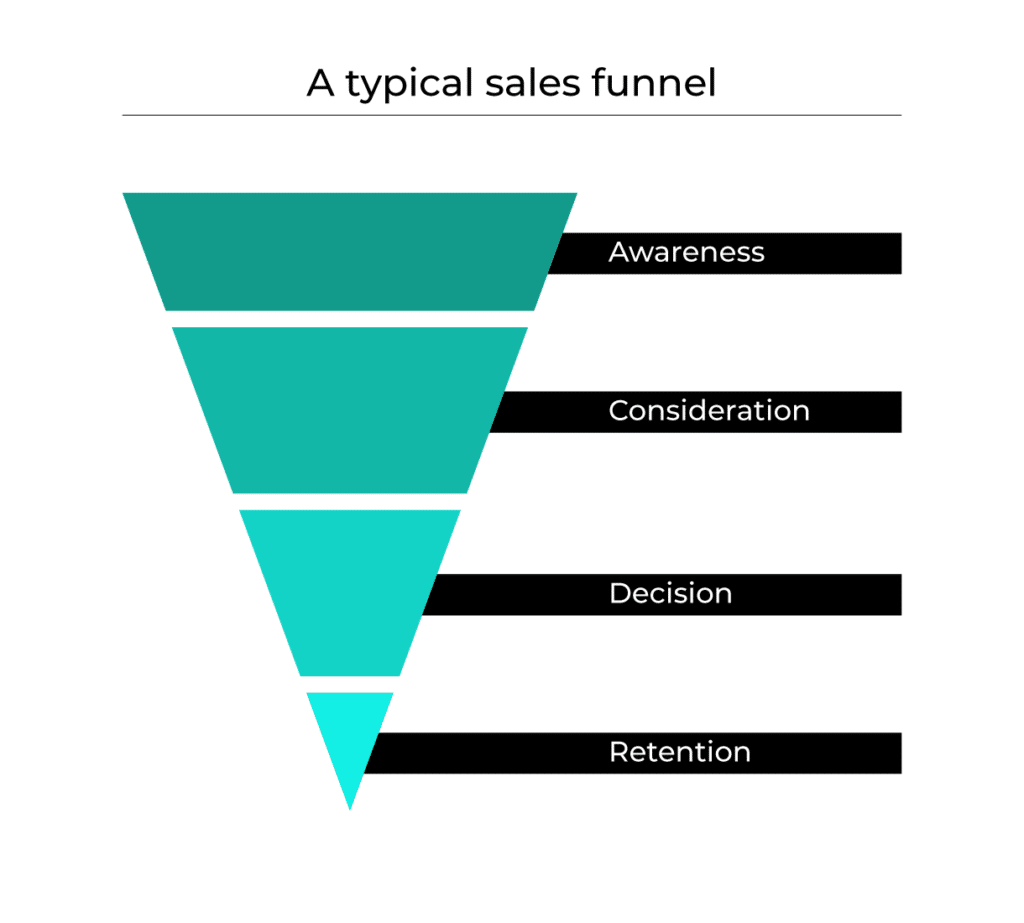
One of the major differences between B2B sales cycles and B2C ones is that they tend to be much longer. When you think about it, this makes intuitive sense.
If you’re in the market for a new jacket, you might decide to google a few possibilities and choose the one you like best. This could take a few minutes or maybe even a few hours, if you’re having fun comparing your options. But even the most discerning of fashion fans is unlikely to take more than a few days over the decision.
Not so with B2B products like SaaS platforms. When a business is making a purchase decision, there are multiple individuals involved at each stage of the funnel. The whole process takes time, usually three to six months as a minimum.
What this means for your content and SEO strategy is that you need to produce high-quality content regularly, tailored to each part of the customer journey. Ultimately, this means generating an overall mosaic of content that might look like this:
- Awareness stage: Content that puts your business on potential clients’ radars. Think blog posts (including guest posts on other sites), social media channels, landing pages, podcasts, videos.
- Consideration stage: Having attracted some initial attention, you now begin to build your credibility with more detailed content such as eBooks, white papers, webinars, and emails.
- Decision stage: Work those leads with web pages dedicated to FAQs, pricing, client case studies, and competitive analyses. You should also be including proposals, pitch decks, and more detailed emails targeted at potential sign-ups.
- Retention stage: Keep your clients on board by offering them continuing value such as with new feature walkthroughs and an efficient help center.
At the retention stage, the content you produce will be less heavily dependent on SEO to get existing clients’ attention. Nevertheless, you should always be optimizing your pages. Remember that any content that’s publicly accessible will still be getting ranked for B2B search engine queries.
Another difference between B2B and B2C SEO is that the former tends to focus more on long-tail keywords.
These are the keywords that are so specific that not very many people search for them, but the people who do, have a high level of interest. These are the decision-makers you want to reach.
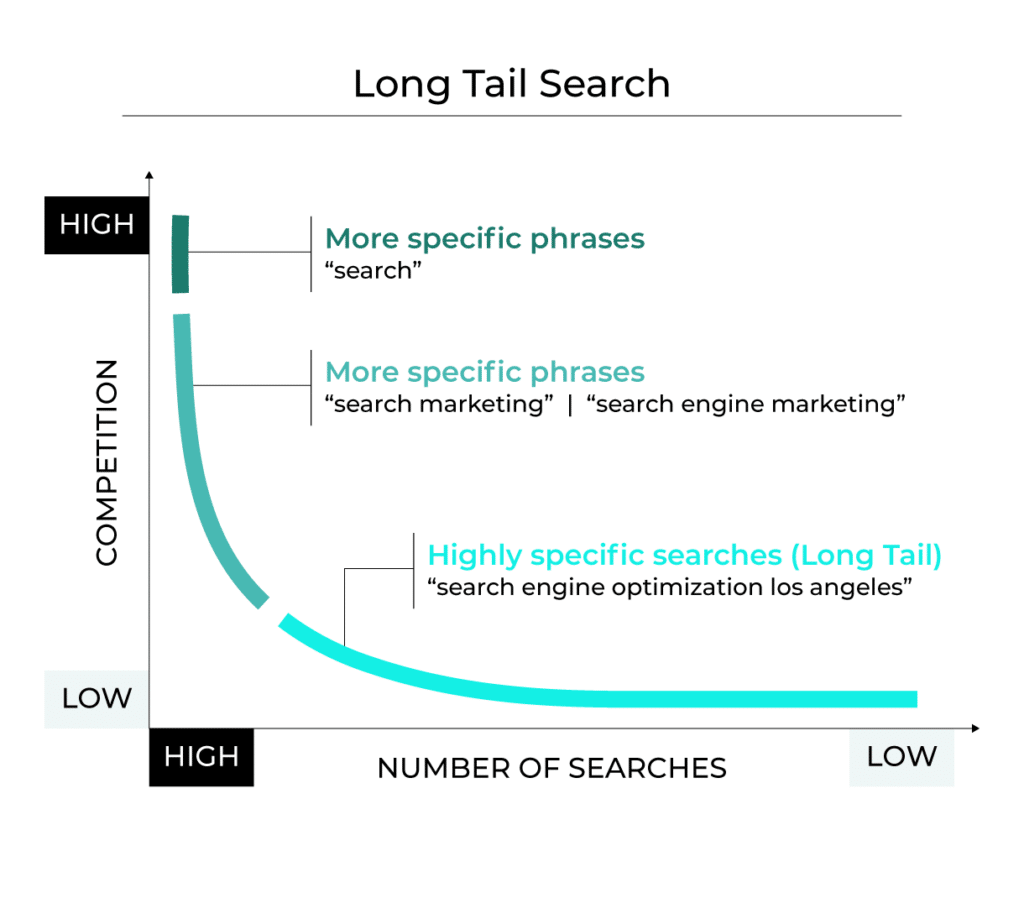
While B2C SEO is all about generating leads fast and at volume, B2B SEO is more specifically targeted at developing a smaller number of high-quality prospects. So aiming to rank for low-volume, long-tail keywords is a valuable tactic for B2B operators.
One approach that can work well is to have separate pages on your site dedicated to different industries.
In other words, you create individual sections of your site dedicated to how your product can help businesses in say, manufacturing, hospitality, healthcare, and more—even if your offering is identical for each. You can word the content to highlight specific benefits for each different sector.
This works because it catches a lot of long-tail searches. If you provide CRM tools, for example, you’ll begin to rank higher for a keyword like “CRM tools for healthcare industry”, because the search engine will deem your dedicated page to have high relevance.
When a B2B SEO agency begins to work with a client, one of the first things they’ll do is some dedicated keyword research. They’ll explore every aspect of the targeted niche, including looking at how well the competition is ranking for crucial keywords.
Then, they’ll develop a content strategy plan suited to your business goals. And this is where the magic starts to happen.
The importance of an effective B2B SEO content strategy
Why is implementing a sound B2B SEO content strategy so important? Well, there are a few reasons:
- Brand visibility: First and foremost, because it helps increase your brand’s visibility. When you target relevant keywords and optimize your content, you attract more organic traffic from potential clients who are actively searching for the kinds of products you offer.
- Targeted audience engagement: It’s vital to create highly targeted and relevant content that resonates with your B2B audience. This starts by understanding the needs and interests of your target customers. You can engage them very effectively simply by tailoring your content to address the kinds of challenges they’re facing.
- Demonstrating authority: Well-crafted, informative content helps establish your business as an authority in your field. If you can manage to deliver genuinely valuable insights and expertise via your content, your target audience will start to realize that you know what you’re talking about. In turn, they’ll be more likely to trust you with their business.
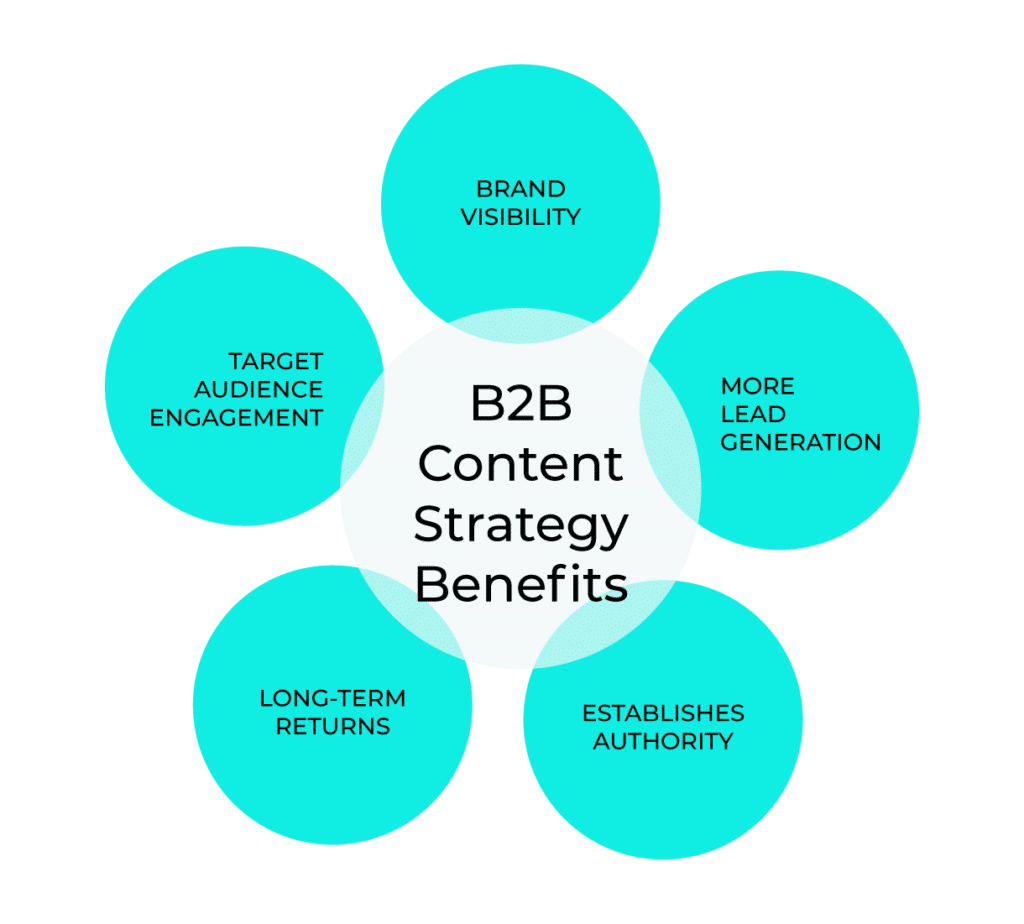
- Long-term returns: Because your content will remain online unless you decide to remove it, your SEO strategy will continue to generate results over time. This makes it remarkably cost-effective compared to paid search ads, which only work for as long as you’re handing over the money.
- Lead generation: Putting this all together, a robust content and SEO strategy ultimately brings leads to your door. Using a combination of excellent content and technical tactics like B2B link building, you attract the kind of interest that eventually leads to cold hard conversions.
B2B SEO content best practices
So how do you make this happen in practice? It’s time to take a closer look at some best practices a top B2B SEO company would typically follow.
1. Create buyer personas
Strategizing your B2B content starts with creating buyer personas. These are imaginary characters that represent the people you are trying to reach.
Be specific; you want to include as much detail as possible to give the creator of the content a clear vision of who it’s supposed to be aimed at.
To keep the process consistent, use a template. This should include a number of questions you answer to gradually build up a picture of the individual.
Possible details to include:
- Who are they? (name)
- What industry are they in?
- What is their role?
- Who do they report to?
- What are their professional responsibilities?
- What problems are they trying to solve?
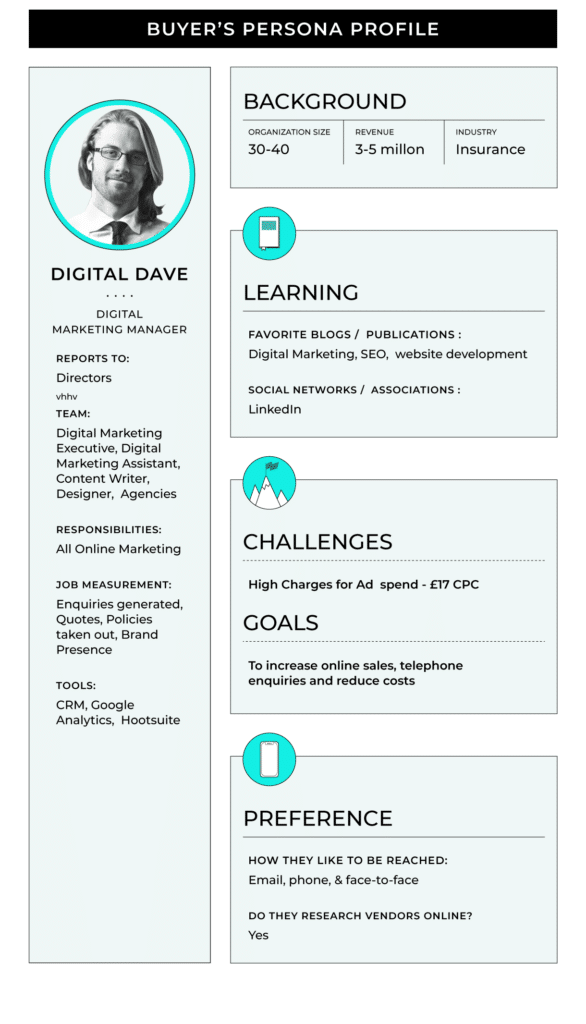
Creating a dedicated persona or avatar like this forces you to focus on the specific needs of your target clients.
2. Don’t neglect site and on-page optimization
Creating engaging content isn’t enough by itself to ensure great SEO results. It’s also crucial to pay attention to the technicalities.
The following are vital to make sure you rank well for any of your targeted keywords:
- Fast loading speed
- Image compression
- Having an XML sitemap
On each page, you should optimize every element. That means the meta description, the page title, the header tags, the URL, and even the alt text on any images you include. You also want to be sure to include internal links to other pages on your site and, ideally, some top-quality backlinks from other high-authority sites.
Doing all this helps the search engine index your content quickly and accurately. A well-organized and fully optimized site gives you an advantage when it comes to ranking high in organic search.
3. Use topic clusters
Any B2B SEO company worth its salt doesn’t just stop there, though. Instead, it will develop a content strategy based on owning an entire topic consisting of related ideas.
To do this, you use a simple structure comprising:
- Pillar content: This is the core of the topic cluster. It’s a single, well-thought-out, authoritative piece of content that covers the subject in depth. Pillar content tends to be longer than regular blog posts or articles.
- Cluster Content: Cluster content consists of multiple articles, each covering a different aspect of the main topic in more depth.
- Internal linking: Now comes the glue that holds the cluster together. Without these links, you essentially just have a series of unrelated articles. Linking the cluster content back to the pillar content ties everything together nicely and creates a cohesive package.
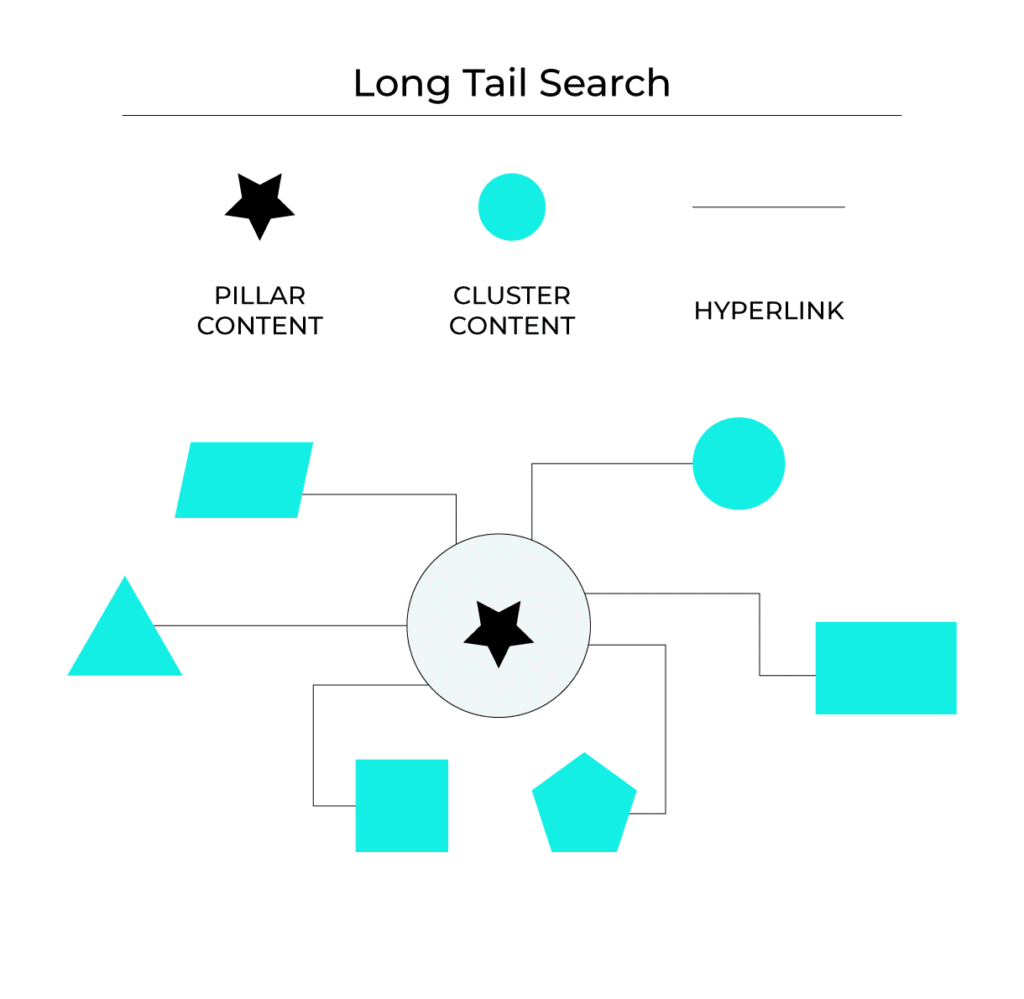
The goal of using topic clusters is to create a semantic connection between related content. This encourages search engines to interpret your site as having topical expertise, improving your domain authority, and landing you higher up the SERP.
In this particular case, what’s good for search engines is also good for human readers. Grouping relevant articles together also helps visitors to your site navigate your content and gives a professional impression.
Reinforce your B2B content with a strategic SEO approach
When it comes to getting the most out of your content, having a tailored strategy is key.
Let’s face it: In the B2B space, competition can be fierce. A strategic SEO approach can help you gain an advantage and outrank competitors in organic search results.
With the right B2B SEO content strategy in place, you’ll see a leap in site traffic and be able to build your brand visibility and authority.
At accelerate agency, we have years of experience in helping clients in the SaaS space do just that. If you’d like to reach out for some guidance on how to make your content land with impact, we’re here to help.